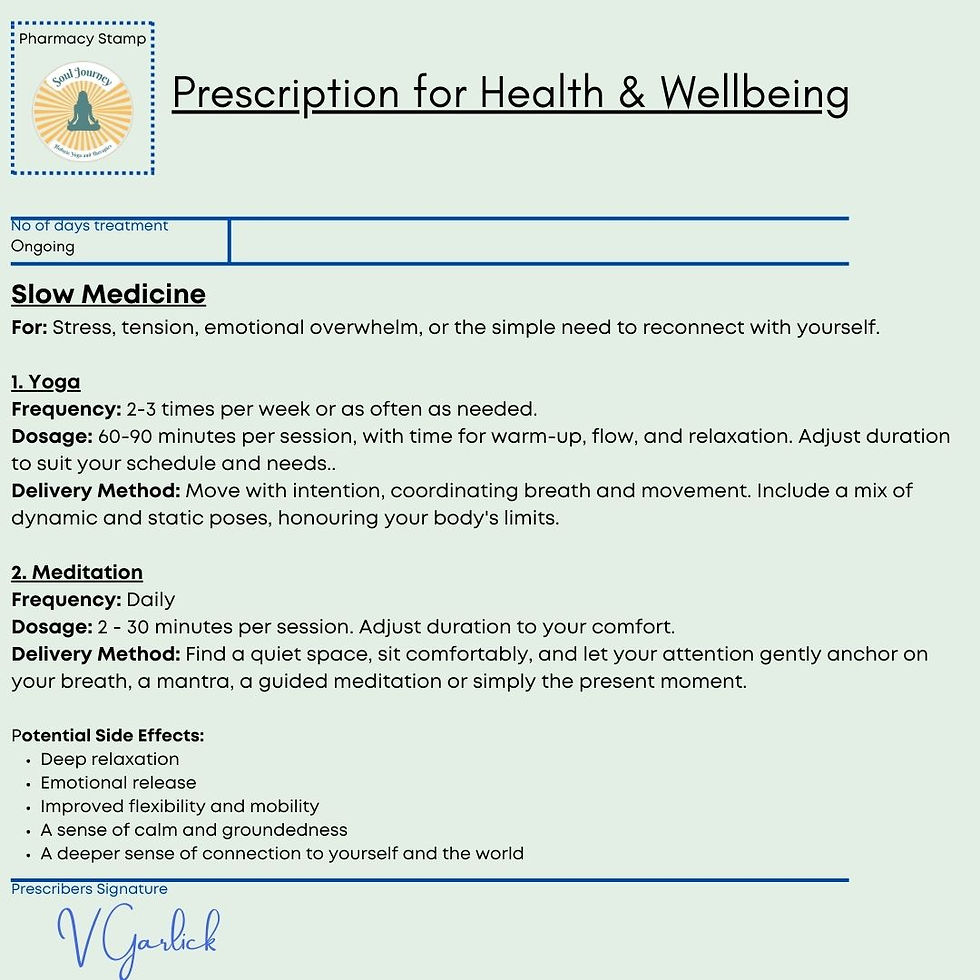The Living Web: How Fascia Shapes Our Posture, Mind, and Mood
- sjholisticyoga
- Nov 3
- 4 min read
I’ve noticed it more and more lately — the subtle forward drop of the head, that gentle rounding at the base of the neck. For me, it doesn’t just happen when I’m on my phone or laptop, but when I’m reading too. I spend hours with my head bent over a book, lost in words and ideas, unaware that my body is quietly curving inwards around the story.

It doesn’t feel like much at first, but over time the body begins to shape itself around this familiar pattern. What we often call “text neck” is really a story written deep into the connective web of the body — a tale of modern life told through the language of fascia.
Fascia is the silken, fibrous tissue that wraps through and around everything — muscles, bones, organs, even nerves. It’s what gives us our shape and our sense of cohesion. And because fascia is living tissue, it adapts to what we do most often.
When the head hangs forward, the fascia at the front of the body — through the throat, collarbones, and chest — shortens and tightens. Meanwhile, the fascia along the back of the neck, shoulders, and spine is drawn long and tense, losing its supple elasticity. The body’s natural tensegrity — that delicate balance of front and back — starts to dissolve. The result is a quiet stiffness, a loss of buoyancy, and often a sense of heaviness that creeps into both body and mind.
The World Around Us - We Are All Connected

But fascia doesn’t only exist within us. When we look to the natural world, we find its reflections everywhere — the same tensile, responsive web that holds the body is mirrored in the living earth. The shimmering thread of a spider’s web, transmitting vibration through its entire structure. The vast mycelium networks beneath the forest floor, connecting roots and trees in quiet conversation. The delicate branching of frost crystals on glass, or the pliant weave of seaweed moving with the tide. Even tree bark, wrapping and renewing, mirrors the fascia that encases and protects our own inner landscape.
To understand fascia is to see that we are not separate from these patterns — we are these patterns. The same intelligent geometry that holds a forest together holds us, too. When our fascia becomes dry or tight, it’s as though our inner ecosystem is craving moisture, flow, and connection — longing to be part of the wider rhythm once again.
Fascia and Mental Health
When fascia becomes tight or dehydrated, it doesn’t just restrict movement — it also speaks to the brain. Fascia is richly innervated with sensory nerve endings known as mechanoreceptors, which constantly send messages about tension, pressure, and position. When this tissue stiffens or binds, those nerve endings begin to signal distress, alerting the nervous system that something is “off.” The brain interprets these signals as discomfort, pain, or fatigue, even when there’s no injury. Over time, this continuous stream of tension-based feedback can heighten the body’s stress response, keeping us in a subtle state of vigilance. Releasing and rehydrating the fascia through mindful movement doesn’t just ease stiffness — it literally changes the messages travelling through the nervous system, inviting the brain to soften its guard and return to a state of calm.
When this cycle of fascial tension and nervous system alertness continues, it begins to shape not only how we move but how we feel. A body held in chronic tightness sends a constant stream of low-level stress signals to the brain, which can quietly influence mood, sleep, and emotional balance. We might notice ourselves becoming more irritable, anxious, or weary without quite knowing why. The body and mind are in conversation, and when the fascia feels bound or constricted, that conversation becomes one of strain rather than ease. As we release and rehydrate the tissue — through movement, breath, stillness, and awareness — the body sends a different message: safety, softness, space. Emotional resilience begins to return, and with it, a deeper sense of connection, calm, and wellbeing.
The wonderful thing is that fascia can be coaxed back into balance with the simplest, most mindful movements. Gentle heart openers, neck releases, slow backbends, rolling the shoulders, and simply pausing to lift the gaze all invite hydration and glide back into the tissue. Over time, this helps us reclaim that natural ease between sthira (stability) and sukha (ease).
So these days, when I catch myself curling over a book, I use it as a reminder — not a reprimand, but a gentle nudge. I take a breath, unfurl my spine, and let the crown of my head rise back towards the sky. The shift is small, but the feeling is profound. It’s as though the body sighs in relief.
Yoga, after all, isn’t just what we do on the mat — it’s this noticing, this return to awareness. It’s in the moments when we pause, lift our head, and feel ourselves expand once more into the fullness of being alive.

If this resonates, you might enjoy exploring how mindful movement and fascia release can help your body feel lighter, freer, and more at ease. I weave this kind of embodied awareness through all my yoga classes — gentle, grounding practices that invite you back home to yourself, one breath at a time.






Comments